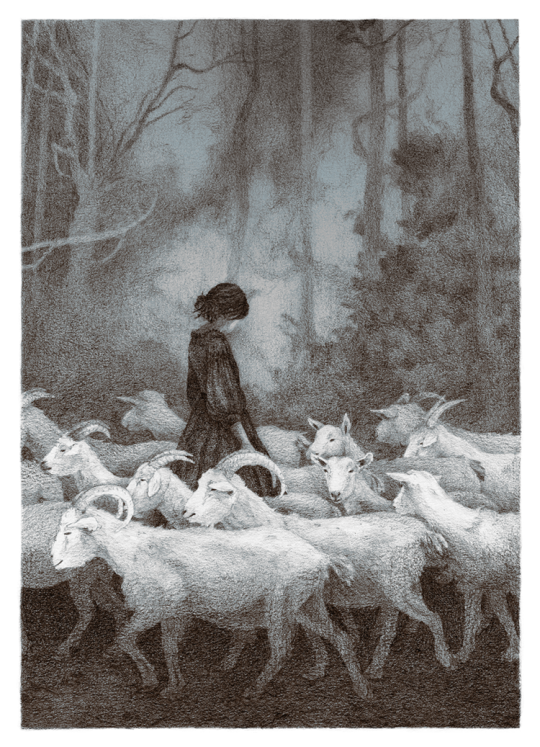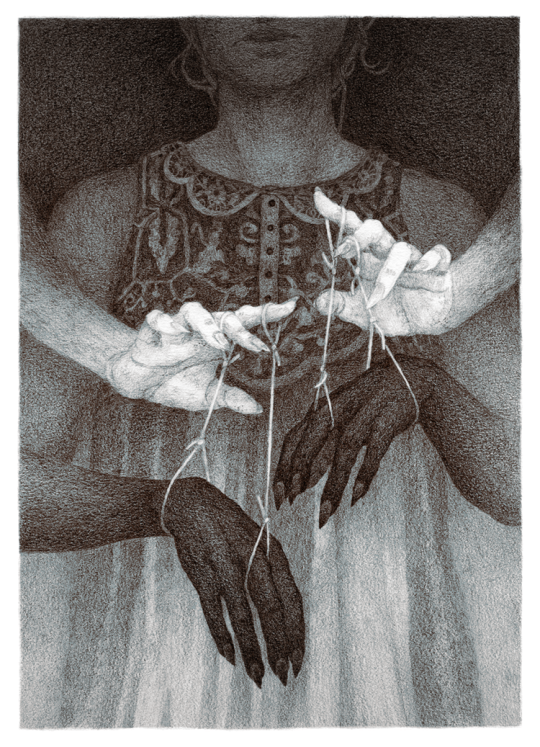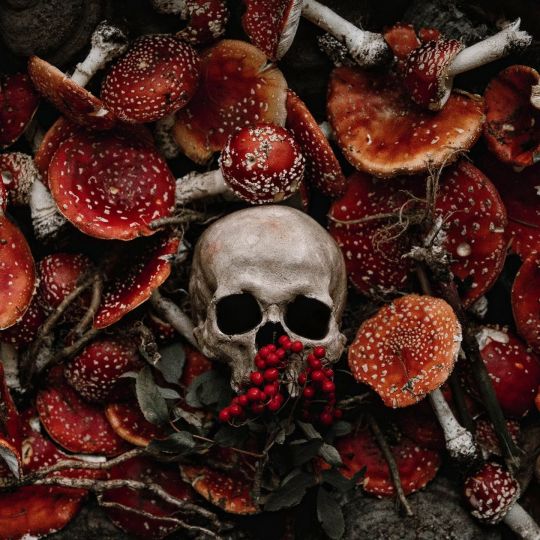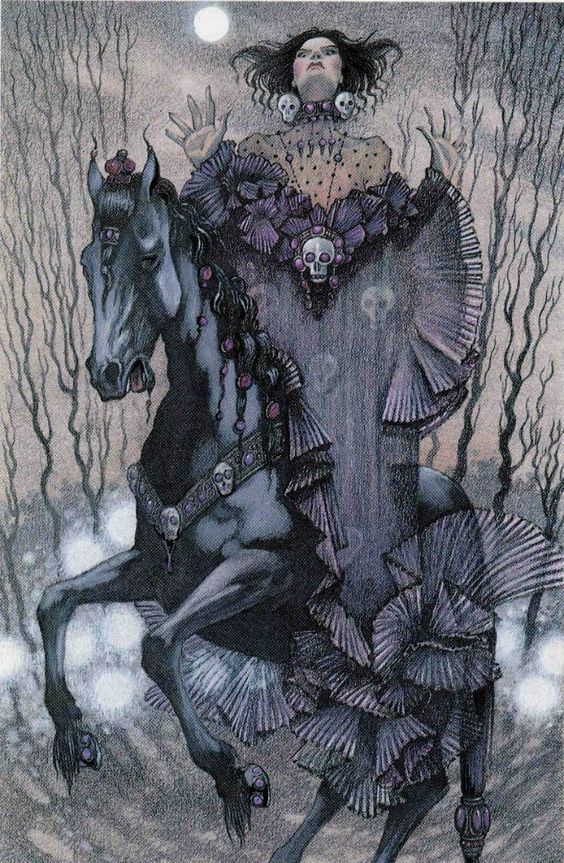Photo

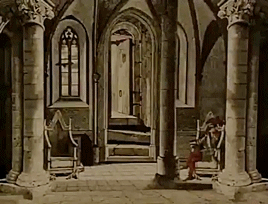
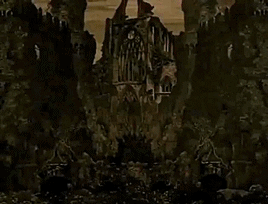
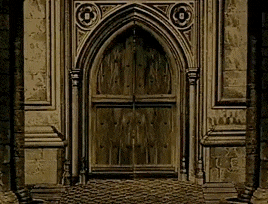


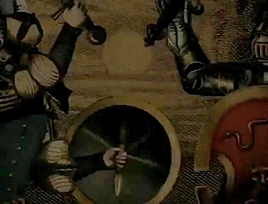
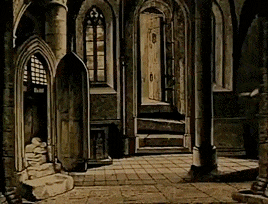

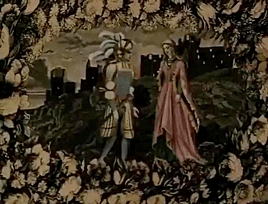
Jan Švankmajer’s Castle of Otranto (1977) is an animated adaptation of Horace Walpole’s 1764 novel of the same name. This novel is credited with the start of the genre of gothic fiction, and was heavily influential on the horror genre as a whole.
20K notes
·
View notes
Text
Ask me a question about weather magic.

4 notes
·
View notes
Photo

Source details and larger version.
Vintage wolfman / werewolf imagery.
344 notes
·
View notes
Text
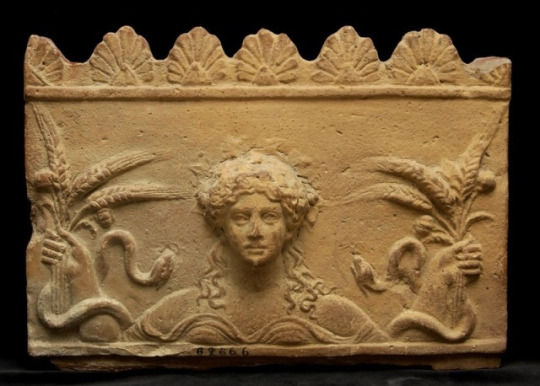
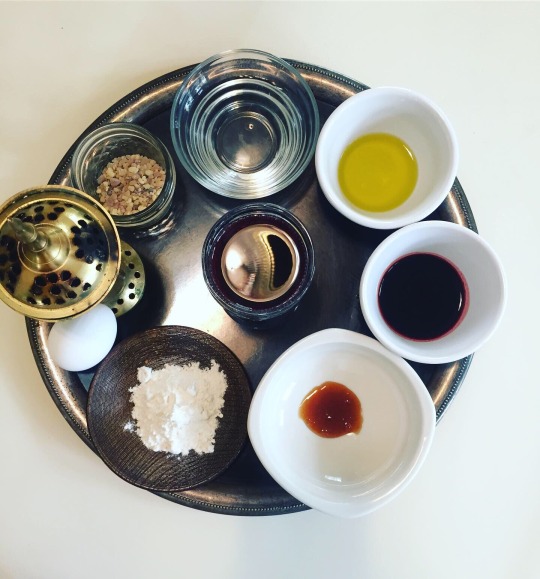
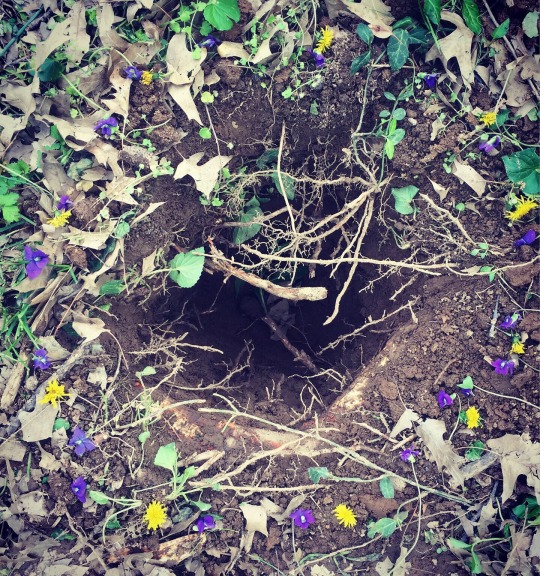
Happy Cerealia!!!
Today is the Roman festival of Ceres. Above are couple photos from the ritual, and while I recover in my cozy bed I will share a story with you. This is from Ovid’s Metamorphoses, Melville’s translation. (TW: Abduction, Rape)
The Abduction of Proserpine
“The land of Sicily quakes as Typhoeus the Giant buried beneath the island heaves and even Rex Silentum (the king who rules the land of silence) shudders lest the ground in gaping seams should open and the day stream down and terrify the trembling Umpire. Tyrannus had left his dark domains to and fro, drawn in his chariot and sable steeds, inspected the foundations of the isle. His survey done, and no point found to fail, he put his fears aside; when, as he roamed, Erycina from her mountain throne, saw him and clasped her swift-winged son, and said: ‘Cupido, my child, my warrior, my power, take those sure shafts with which you conquer all, and shoot your speedy arrows to the heart of the great god to whom the last lot fell when the three realms were drawn. Your majesty subdues the gods of heaven and sea… Why should Tartara lag behind? Why not there too extend your mother’s empire and your own? The third part of the world’s at stake, while we in heaven (so long-suffering!) are despised - my power grows less, and less the power of Amor. Do you not see how Pallas and Diana, queen of the chase, have both deserted me? And Ceres’ daughter, if we suffer it, will stay a virgin too - her hope’s the same. So for the sake of our joint sovereignty, if that can touch your pride, unite in love that goddess and her uncle.’
So she spoke. Then Cupido guided by his mother, opened his quiver and of all his thousand arrows selected one, the sharpest and the surest, the arrow most obedient to the bow, and bent the pliant horn against his knee and shot the barbed shaft deep in Dis’ heart. Not far from Henna’s walls there is a lake, Pergus by name, its waters deep and still; it hears the music of the choiring swans as sweet as on Caystros’ gliding stream. Woods crown the waters, ringing every side, their leaves like awnings barring the sun’s beams. The boughs give cooling shade, the watered grass is gay with spangled flowers of every hue, and always it is spring. Here Proserpina was playing in a glade and picking flowers, pansies and lilies, with a child’s delight, filling her basket and her lap to gather more than the other girls, when, in a trice, Dis saw her, loved her, carried her away - love leapt in such a hurry! Terrified, in tears, the goddess called her mother, called her comrades too, but oftenest her mother; and, as she’d torn the shoulder of her dress, the folds slipped down and out the flowers fell, and she, in innocent simplicity, grieved in her girlish heart for their loss too. Away the chariot sped; her captor urged each horse by name and shook the dark-dyed reins on mane and neck. On through deep lakes he drove, on through Palici’s sulphurous pools that boil in reeking chasms, on past Bacchiadae, where settlers once from Corinthus’ isthmus built between two harbours their great battlements.
A bay confined by narrow points of land lies between Arethusa Pisaea and Cyane. And there lived Cyane, the most renowned of all the Nymphae Sicelidae, who gave her pool its name. Out of her waters’ midst she rose waist-high and recognised the goddess. ‘Stop, stop!’ she cried, ‘You cannot take this girl to wife against Queen Ceres’ will! She ought to have been wooed, not whirled away. I too, if humble things may be compared with great, was loved; Anapus married me; but I was wooed and won, not, like this girl, frightened and forced.’ She held out her arms outstretched to bar his way. But Saturnius restrained his wrath no longer. Urging on his steeds, his terrible steeds, and brandishing aloft his royal sceptre in his strong right arm, he hurled it to the bottom of the pool. The smitten earth opened a way to Hell and down the deep abyss the chariot plunged. But Cyane, heartbroken at the rape of Proserpine and at her pool’s outrage, in silence carried in her heart a wound beyond consoling, and in endless tears she wasted away. Into the pool - her pool and she but now its deity - she spread dissolved.
Ceres Searches for Proserpina
Ceres meanwhile in terror sought her child vainly in every land, o'er every sea. Never Aurora (the Dawn) rising with dewy hair, nor ever Hesperus (the Evening Star) saw her at rest. She lit pine-torches, one in either hand, at Aetna’s fires, and through the frosty dark bore them unsleeping. When the friendly day had dimmed the stars, she sought her daughter still from sunrise until sunset hour by hour…
Through what far lands and seas the goddess roved were long to tell; the whole world failed her search. She turned again to Sicania and there, in wanderings that led her everywhere, she too reached Cyane; who would have told all, had she not been changed. She longed to tell but had no mouth, no tongue, nor any means of speaking. Even so she gave a clue, clear beyond doubt, and floating on her pool she showed the well-known sash which Persephone had chanced to drop there in the sacred spring.
How well the goddess knew it! Then at last she seemed to understand her child was stolen, and tore her ruffed hair and beat her breast. Where the girl was she knew not, but reproached the whole wide world - ungrateful, not deserving her gift of grain - and Trinacria in chief where she had found the traces of her loss. So there with angry hands she broke the ploughs that turned the soil and sent to death alike the farmer and his labouring ox, and bade the fields betray their trust, and spoilt the seeds…
Then that fair Nymphe Alpheias rose from her pool and brushed back from he brow her dripping hair, and said : ‘O thou, divine Mother, who through the world hast sought thy child… The land is innocent; against its will it opened for that rape. While beneath the earth I glided in my Stygian stream, I saw, myself with my own eyes, your Proserpina. Her looks were sad, and fear still in her eyes; and yet a queen, and yet of that dark land Empress, and yet with power and majesty the consort of the Tyrannus Infernus (Sovereign lord of Hell).’ The mother heard in horror, thunderstruck it seemed and turned to stone.
The Return of Proserpina
Then as her shock so great gave way to grief as great, she soared borne in her chariot, to the sky’s bright realms and stood, with clouded face and hair let loose, indignant before Jove and said: ‘I come to plead for my own flesh and blood, yours too; and if the mother finds no favour, let at least the daughter move her father’s heart; love her not less because I gave her birth. Behold the daughter I have sought so long is found, if found is surer loss, or if but to know where she is finding her. Her theft I’ll bear if he’ll but bring her back; a thief, a kidnapper’s no proper husband for child of yours, even if she’s mine no more.’
And Juppiter replied: ‘The child is yours and mine, our common care and love, If we allow things proper names, here is no harm, no crime, but love and passion. Such a son-in-law, if you, Ma'am, but consent, will not disgrace us. To be Jove’s brother, what a splendid thing! - if that were all! What then, when that’s not all, when he yields place to me only because the lots so fell? But if your heart’s so set to part them, Proserpina shall reach the sky again on one condition, that in Hell her lips have touched no food; such is the rule forestablished by the three Parcae.’
So Jove replied; but Ceres was resolved to win her daughter back. Not so fate permitted, for the girl had broken her fast and wandering, childlike, through the orchard trees from a low branch had picked a pomegranate and peeled the yellow rind and found the seeds and nibbled seven. The only one who saw was Orphne’s son, Ascalaphus, whom she, no the least famous of the Nymphae Avernales, bore once to Acheron in her dusky bower. He saw and told, in spite, and by his tale stole her return away. The Queen of Hell (Regina Erebi) groaned in distress and changed the tale-bearer into a bird. She threw into his face water from Phlegethon, and lo! a beak and feathers and enormous eyes! Reshaped, he wears great tawny wings, his head swells huge… a loathsome bird, ill omen for mankind, a skulking screech-owl, sorrow’s harbinger.
That tell-tale tongue of his no doubt deserved the punishment. But the Acheloides, why should it be that they have feathers now and feet of birds, though still a girl’s fair face, the sweet-voiced Sirenes? Was it not because, when Proserpine was picking those spring flowers, they were her comrades there, and, when in vain they’d sought for her through all the lands, they prayed for wings to carry them across the waves, so that the seas should know their search, and found the gods gracious, and then suddenly saw golden plumage clothing all their limbs? Yet to reserve that dower of glorious song, their melodies’ enchantment, they retained their fair girls’ features and their human voice. Then Juppiter, to hold the balance fair between his brother and his sister in her grief, portioned the rolling years in equal parts. Now Proserpine, of two empires alike great deity, spends with her mother half the year’s twelve months and with her husband half. Straightway her heart and features are transformed; that face which even Dis must have found unhappy beams with joy, as when the sun, long lost and hidden in the clouds and rain, rides forth in triumph from the clouds again. So Ceres had regained her Proserpine.”
139 notes
·
View notes
Photo

Triptolemus is given the gift of Agricultural Knowledge to spread throughout the world
62 notes
·
View notes
Photo
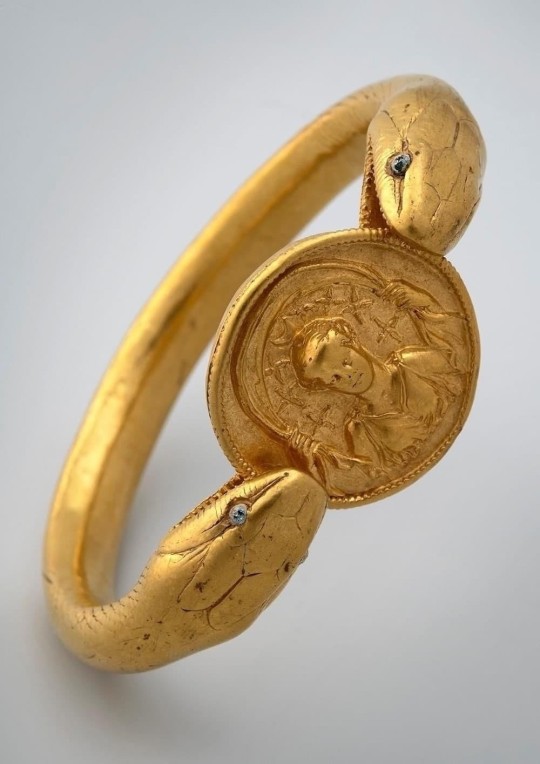
The bracelet that gave its name to a house in Pompeii: House of the Golden Bracelet.
Two-headed snake, with glass eyes, holding a medallion with the image of Diana (goddess moon)
3K notes
·
View notes
Text
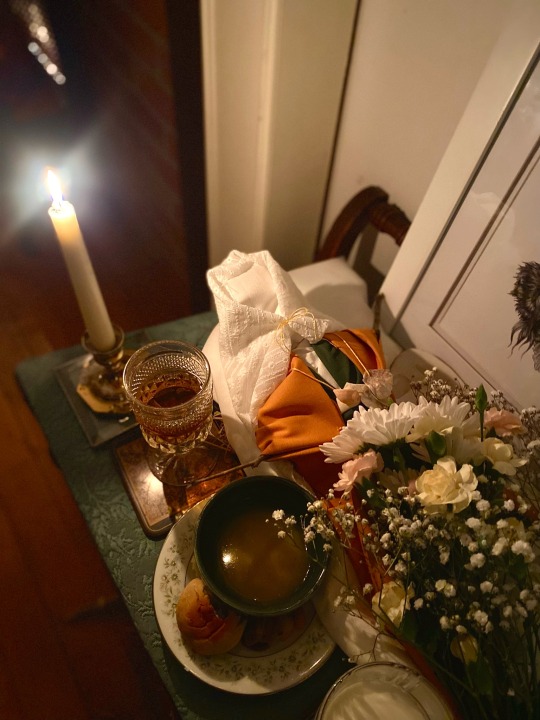








February is almost over, which reminded me that I haven't shared photos from Lá Fhéile Bríde yet. This year was marvelous. Such good food and happy company. 🕯🌾✨
27 notes
·
View notes
Text
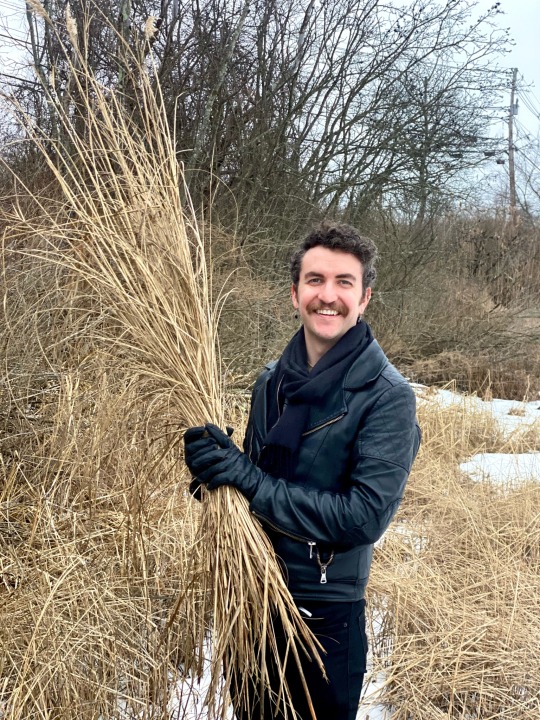
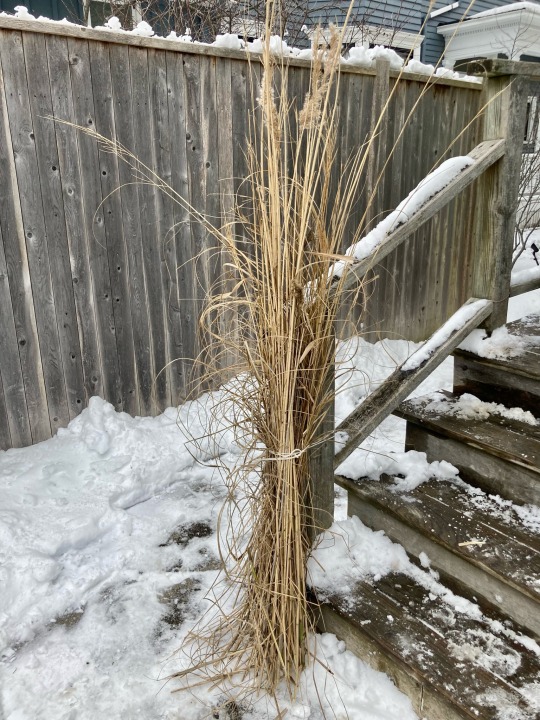

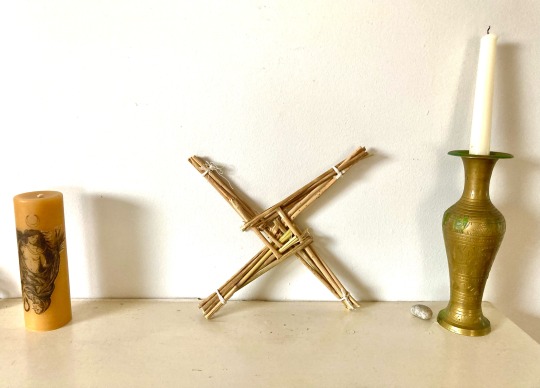
Making Bríd crosses, 2024 💛
Posting this a bit late, obviously. Featuring a huge amount of reeds, burning of the old crosses, the waiting, the making, and a fresh one in place.
46 notes
·
View notes
Text

'Devils from under the Belarusian soil' by Valery Slauk
1K notes
·
View notes
Photo

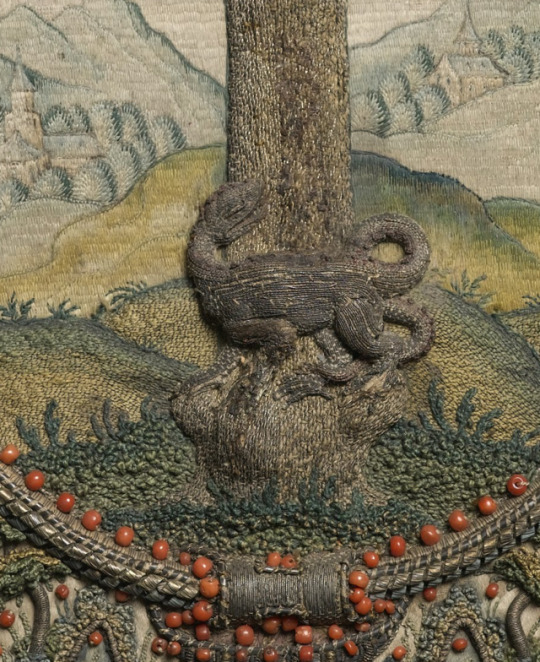
Panel of raised embroidery made of silk, metal wire, metal strips, coral beads, 17th C. [France?] - maker unknown.
Collection of the Cooper Hewitt, Smithsonian Design Museum
15K notes
·
View notes
Photo


The Discovery of a London Monster Called the Black Dog of Newgate, 1638
6K notes
·
View notes
Photo

And a less well-known Fuseli/Füssli: Undine comes into the house of the fishermen.
199 notes
·
View notes
Text
Imbolc Festivities
Lá Fhéile Bríde Sona Duit!!!
(Law leh BREEJ-uh SUN-uh ditch)
Happy St. Bríd’s Day To You!

Gabhaim molta Bride
Ionmhain í le hÉireann
Ionmhain le gach tír í
Molaimis go léir í
Lóchrann geal na Laighneach
‘Soilsiú feadh na tire
Ceann ar óghaibh Éireann
Ceann na mban ar míne
Tig an gheimhreadh dian dubh
Gearradh lena ghéire
Ach ar Lá ‘le Bríde
Gar dúinn Earrach Éireann
Gabhaim molta Bride
Ionmhain í le hÉireann
Ionmhain le gach tír í
Molaimis go léir í
I praise Brigid
Beloved in Ireland
Beloved in all countries
Let us all praise her
The bright torch of Leinster
Shining throughout the country
The pride of Irish youth
The pride of our gentle women
The house of winter is very dark
Cutting with its sharpness
But on Brigid’s Day
Spring is near to Ireland
– traditional Gaelic song for Bríd
Today is the Feast Day of Saint Bríd! The festival date of Imbolc on February 1 stretches back to the Iron Ages in Ireland, but the ancient context of the festival is relatively enigmatic. It is very likely a celebration of the beginning of the pastoral season as this is when the ewes start to produce milk. However, being one of the four ancient feast days, the 1st of February and the night before are the focus of many supernatural occurrences and ceremonial traditions.
In the last few hundred years these now focus on St. Bríd – who shares a name with a preChristian figure – who is worshipped and petitioned for blessings and favor. This would include a large feast of primarily dairy-based dishes in honor of the new agricultural season, so whip out the butter and cheese!
There are many legends about St. Bríd in Ireland, legends that mix the values of ancient Irish heroes with the pious and monastic values of early Irish Christianity. “Brigit is the perfect example of Irish hospitality: she can (by a miracle) milk her cows three times in one day to provide a meal for visitors; she can outwit a king (in the cause of charity), as well as any pagan hero could have done and with far more charm.” (Hughes)
She is a great leader of women “Indeed St Brigit’s foundation at Kildare was unique in sixth-century Ireland in being a double monastery for both men and women, each group following the same rule and using a common church, with the government of the whole community held jointly by the Abbess and the bishop-abbot.” (Hughes)

One way of celebrating her was to make a doll or Brideog in her image, which was escorted into or around the house in various manners varying village to village. Usually she was laid to rest inside the house, and divination ensued.
“There [in Ireland] the churn staff, not the corn sheaf, is fashioned into the form of a woman, and called ‘Brideog,’ little Bride. The girls come clad in their best, and the girl who has the prettiest dress gives it to Brideog. An ornament something like a Maltese cross is affixed to the breast of the figure. The ornament is composed of straw, beautifully and artistically interlaced by the deft fingers of the maidens of Bride. It is called 'rionnag Brideog,’ the star of little Bride. Pins, needles, bits of stone, bits of straw, and other things are given to Bride as gifts, and food by the mothers.Customs assume the complexion of their surroundings, as fishes, birds, and beasts assimilate the colours of their habitats. The seas of the 'Garbh Chriocha,’ Rough Bounds in which the cult of Bride has longest lived, abound in beautiful iridescent shells, and the mountains in bright sparkling stones, and these are utilised to adorn the ikon of Bride. In other districts where the figure of Bride is made, there are no shining shells, no brilliant crystals, and the girls decorate the image with artistically interlaced straw.The older women are also busy on the Eve of Bride, and great preparations are made to celebrate her Day, which is the first day of spring. They make an oblong basket in the shape of a cradle, which they call 'leaba Bride,’ the bed of Bride. It is embellished with much care. Then they take a choice sheaf of corn, generally oats, and fashion it into the form of a woman. They deck this ikon with gay ribbons from the loom, sparkling shells from the sea, and bright stones from the hill. All the sunny sheltered valleys around are searched for primroses, daisies, and other flowers that open their eyes in the morning of the year. This lay figure is called Bride, 'dealbh Bride,’ the ikon of Bride. When it is dressed and decorated with all the tenderness and loving care the women can lavish upon it, one woman goes to the door of the house, and standing on the step with her hands on the jambs, calls softly into the darkness, 'Tha leaba Bride deiseal,’ Bride’s bed is ready. To this a ready woman behind replies, 'Thigeadh Bride steach, is e beatha Bride,’ Let Bride come in, Bride is welcome. The woman at the door again addresses Bride, 'A Bhride! Bhride thig a stench, tha do leaba deanta. Gleidh an teach dh’an Triana,’ Bride! Bride, come thou in, thy bed is made. Preserve the house for the Trinity. The women then place the ikon of Bride with great ceremony in the bed they have so carefully prepared for it. They place a small straight white wand (the bark being peeled off) beside the figure. This wand is variously called 'slatag Bride,’ the little rod of Bride, 'slachdan Bride,’ the little wand of Bride, and 'barrag Bride,’ the birch of Bride. The wand is generally of birch, broom, bramble, white willow, or other sacred wood, 'crossed’ or banned wood being carefully avoided. A similar rod was given to the kings of Ireland at their coronation, and to the Lords of the Isles at their instatement. It was straight to typify justice, and white to signify peace and purity–bloodshed was not to be needlessly caused. The women then level the ashes on the hearth, smoothing and dusting them over carefully. Occasionally the ashes, surrounded by a roll of cloth, are placed on a board to safeguard them against disturbance from draughts or other contingencies. In the early morning the family closely scan the ashes. If they find the marks of the wand of Bride they rejoice, but if they find 'long Bride,’ the footprint of Bride, their joy is very great, for this is a sign that Bride was present with them during the night, and is favourable to them, and that there is increase in family, in flock, and in field during the coming year. Should there be no marks on the ashes, and no traces of Bride’s presence, the family are dejected. It is to them a sign that she is offended, and will not hear their call. To propitiate her and gain her ear the family offer oblations and burn incense. The oblation generally is a cockerel, some say a pullet, buried alive near the junction of three streams, and the incense is burnt on the hearth when the family retire for the night.” (Carmichael - SLOINNTIREACHD BHRIDE)
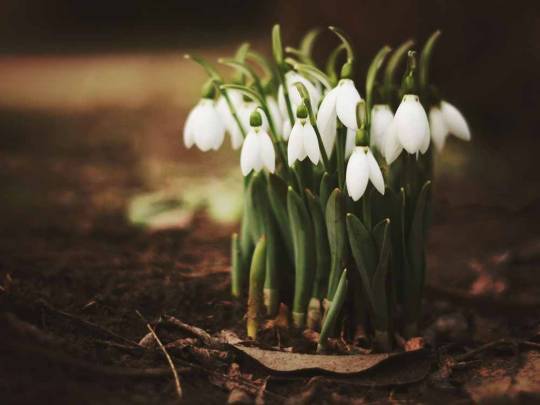
Another tradition on Imbolc is to create a Cros Bríde or Bríd cross out of reeds that were pulled on the eve of the festival. These grant protection throughout the end of winter and the rest of the year until new crosses are made in their place the following Imbolc.
“But the entire round of the year is liberally sprinkled with days of festival, and if we begin with St. Briget it is not merely because she was Irish-born but because her feast marks the beginning of the pastoral year. The blessed Bridie was a cowherd and is therefore associated with cattle and with such flowers as the dandelion–the Plant of Bride–yielding a milky juice which was believed to nourish the young lambs in spring. St. Briget’s Feast was very popular and many superstitious practices, more or less Christianized, cling to the preparations made on St. Briget’s Eve, the last day of January. On that day rushes are fashioned into protective charms known as Briget’s Crosses, a name which illustrates how the church has won over pagan symbols*, for the ‘crosses’ take the form of either [sun wheels] or lozenges, and comparative evidence suggests that they are magic symbols of suns or eyes…A three legged [sun wheel], presumably an old form, is reserved for use in the byre: its shape may be compared with the Celtic triskele. The lozenge-shaped charms have their counterparts in many parts of the world… Briget’s Crosses are believed to protect the house and the livestock from harm and from fire. No evil spirit could pass the charm, which was therefore hung above the door of the house and byre. The rushes must be pulled, not cut, on St. Briget’s Eve, and care must be taken to fashion the crosses from left to right, with the sun. As a rule they are left in position until replaced the following year, though I have seen byres with many crosses thrust into the underthatch, the decaying accumulation of annual offerings. In Co. Galway similar crosses made of wood or straw were also placed in the rafters at Hallowe’en, and the discovery of a partly burnt rush cross which had been deposited in a megalith in Co. Limerick points to a more general cult of the ‘cross’. A ‘love-knot’ of similar shape, fashioned out of sedge leaves, is known from South Wales.

It was popularly believed that the saint wandered through the countryside on the eve of her feast day. Bread was left on the doorestep, and in some districts it was the custom to prepare a small bed of rushes or birch twigs and place it by the fire so that Bridie might come in and rest. Sometimes the last sheaf of harvest was used for the purpose. In south-western Ireland a doll made of straw–or decorated churn-staff–was carried from house to house by ‘Biddy Boys’, wearing straw masks such as are used by mummers and by strawboys at weddings, and singing songs in honour of the saint. they would solicit gifts and end the day in jollification. The evening was celebrated by a supper of pancakes [bannocks] taken from a plate laid on a rush cross, and as on the other quarter-days prognostications were made. A ribbon or piece of cloth exposed on St. Briget’s Eve became endowed with curative powers. It was believed that no work which involved the turning of a wheel should take place on the saint’s day. The placing of a periwinkle in each corner of the kitchen likewise hints at a remote pre-agricultural origin for the festival,* but it came to be associated with the pastoral promise of spring, of warmth, new grass, lambs and milk. It is said that the saint placed her foot in water on her feast day so that on that day it begins to warm up each year.” (Evans)
*presumptuous
*no it doesn’t
The * above are obviously my notes on the passage, which is valuable but yikes.
It is traditional to observe the weather on the morning of Imbolc to divine the coming seasons. If it is rainy and cold then the winter crone, An Cailleach, will not be able to gather enough fire wood for her to continue her foray in this world, creating the sharp winds and snows of winter. Winter would be shorter, and the following seasons would bring good fortune! However, if it is warm and sunny the firewood supply of An Cailleach will be great, and she will continue her reign over winter for many more weeks until she turns back to stone before Summer. This could also mean sickness and trouble for the household.
Sing the saint a song today, recite her genealogy and tell her stories. Make a cross, or a dollie for her, and eat lots and lots of cheese. Lá Fhéile Bríde Sona Duit!!!
References:
The Golden Age of Early Christianity in Ireland (7th and 8th centuries) by Dr Kathleen Hughes, in The Course of Irish History ed. Moody and Martin.
Irish Folk Ways, by E. Estyn Evans
The Carmina Gadelica Vol.I, by Alexander Carmichael
516 notes
·
View notes

